7 Holiday Gift Ideas for New Homeowners

Have a new homeowner on your shopping list? This holiday season, why not give a thoughtful holiday housewarming gift they can use as they settle in to their new place? Whether you need gift ideas for new homeowners or are putting together a wish list of your own, here are some great holiday housewarming gift ideas.
7 New Homeowner Holiday Gifts
If you’re looking for the best housewarming gift ideas this holiday season, here are a few great examples to get you started.
1. Holiday Decorations
Holiday decorations can make wonderful first-time homebuyer gifts. If the new homeowner is putting up a full-sized Christmas tree for the first time, a lovely personalized ornament that commemorates the new home will become a special keepsake. Even if this isn’t a first home, a larger house will need more holiday décor. Themed pillows, metallic garlands, or illuminated table or wall décor are all welcome additions that add an elegant, festive touch to the new home.
2. Bartender Kit
The holidays are a time for gathering and for those who love mixing and serving drinks for family members and guests, a bartending kit makes a great new homeowner holiday gift. A quality cocktail set with a corkscrew, strainer, tongs, cocktail shaker, and more provides everything a new homeowner needs to mix delicious drinks just like they get at their favorite bar or restaurant.
3. Decorative Throws and Weighted Blankets
Who doesn’t love to curl up on the couch under a cozy, soft blanket while watching a movie or reading? A gorgeous decorative throw makes an ideal holiday gift for the new homeowner, and you can even choose one with a winter or holiday motif. There are many luxurious and affordable options that look beautiful casually draped over a chair when not in use.
A weighted blanket is another wonderful new homeowner holiday gift. The pressure from these cozy blankets is calming for many people and research shows they may reduce anxiety and help with insomnia in some cases. Even without these benefits, a weighted blanket can be a welcome way to make a new space more comfortable for new homebuyers.
4. Wireless Grilling Equipment
Outdoor cooking is a fun way to enjoy a new home, and there are plenty of great gadgets out there that can make it a superb experience. Wireless grilling tools such as thermometers, precision cookers, and lighters can help make sure food is prepared to perfection, making them the ideal gift for barbecue enthusiasts.
5. Cordless Stick Vacuum
While they may not be exciting, useful gifts for new homeowners may be the most appreciated, when all is said and done. While many people enjoy the process of vacuuming, the right tools can make it better for anyone. Cordless stick vacuums are convenient, easy to carry, and powerful, making the whole process of cleaning more palatable, if not thoroughly enjoyable!
6. Bidet Attachment
While it may seem like a gag item (and it might well be, depending on who you’re giving it to), a bidet attachment can be a great way to improve the quality of life for new homeowners. Bidets have been shown to be more hygienic and gentle than relying on toilet paper, and they’re easy to install too! What may start out as a joke may quickly become a valuable addition to a new home.
7. Sports Equipment
Finally, many new homeowners look forward to spending time outdoors, whether that’s in a spacious yard or within your new home community’s green spaces and parks. Sports equipment such as a portable badminton, pickleball or croquet set can make a good holiday housewarming gift for people who love to be active outside. They’re also excellent for getting a family out where they can meet neighbors and friends with similar interests.
Frequently Asked Questions about Housewarming Gifts
What’s a good gift to bring to a holiday housewarming?
Something festive always makes a good holiday housewarming gift. This might be a bottle of the homeowner’s favorite spirit, or some holiday décor. The first-time homeowner will appreciate anything they may never have needed while living in an apartment, such as a home tool kit, a gardening set, or a personalized name and/or address plaque to commemorate the purchase of the first home.
How much should I spend on a housewarming gift?
Great gifts come in all price ranges. Usually, $20 to $50 is a good rule of thumb, but at the end of the day, it’s more important for a gift to be useful or meaningful than to be merely expensive.
Is a gift card a good housewarming gift?
Often, housewarming gift lists and registries will include gift cards. A gift card can give new homeowners a lot of flexibility in how they furnish their new house, so it can be a good option if you’re at a loss for ideas or don’t know the recipient that well.
Creating a Warm Welcome at Lilyana by Hillwood
If you’re considering a move yourself, Lilyana by Hillwood is a great option in up-and-coming Celina, Texas. Located within Prosper ISD, our new home community offers homes from four of the top builders in the DFW area. Browse for new construction homes online or visit our builder’s models to see our beautiful community and amenities. Get in touch today!
Posted on November 15, 2022 by Taryn Dandurand
Is Fall 2022 Still A Good Time to Buy A Home?
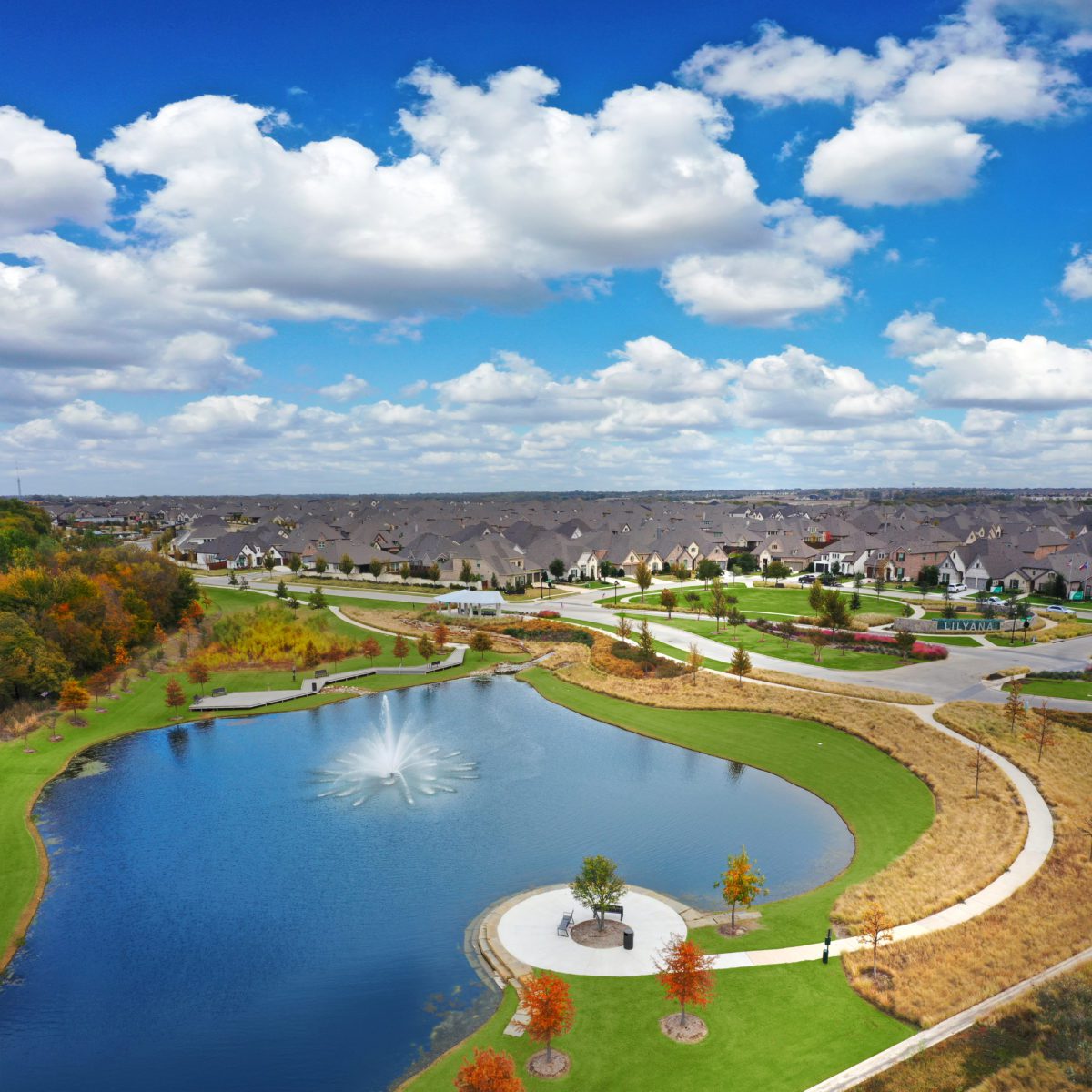
So many of us are asking the same question right now: Should I buy a house now or wait until 2023? The short answer is, buy now! If you have the means, consider buying this fall.
The complicated answer is that this simple question depends on a number of factors around your family’s personal circumstances. However, on the whole, most experts and first-time homebuyers agree – it’s still a prime season for buying a home in Prosper, Celina, or Collin County.
Unlike some parts of the US, the DFW housing market is in a great place. The North Texas area is still in high demand, particularly because of its many new home communities.
Trying to decide whether to buy a house now or wait? Don’t wait too long and miss your opportunity. Consider these variables as you kick off your home search.
5 Reasons Why Now Is the Time to Buy A House
If you’re in a good financial position and your job is secure, it can be a great time to invest in a home. Ask any financial expert and they’ll tell you, owning a home or investing in real estate is the fastest route to building wealth.
Some reasons to buy a house now:
Credit score averages are on the rise.
Credit reporting agency, Experian, reports that, “The average credit score in the U.S. hit a record high of 714 in the third quarter of 2021, a 4-point increase from 2020.” Higher credit scores qualify buyers for the lowest interest rates. If you’ve been working on yours, now could be the time to cash in on the effort.
Interest rates tend to fall in the fall.
While it’s true that interest rates have gone up since their historic lows, they are still comparatively great. Plus, rates historically reach their lowest points of the year in Q4. What’s more, given where interest rates were just ten years ago, the average monthly mortgage payment has actually decreased. (Be sure to check the proposed tax rate in your area to get a better idea of your final amount.)
New build inventories are high.
The rush isn’t over, but home inventories are finally starting to catch up from where they were at the height of the buying frenzy. That’s especially true in new home communities like Lilyana by Hillwood, who have available homes from multiple top DFW homebuilders. That means more variety and inventory to choose from, making it a really a good time to buy.
Competition is cooling.
If the thought of engaging in a bidding war gives you pause, you’re certainly not alone. It can drive up the sales price of a home and draw out the time it takes to find your new space. Fortunately, data shows most homes have fewer bidders per listing right now. The National Association of REALTORS® reports that homes for sale are getting half as many offers as compared to Spring.
DFW has a strong job market.
If you’re going to buy a house, you really want job security. Plain and simple. Though no one can predict the future, Dallas and its many suburbs have some of the strongest job markets in the country, making it a great place to find opportunities. In fact, a recent report from the Bureau of Labor Statistics showed the local job gain rate increased 6.7%, almost double the national average.
Should you buy a house in 2022 FAQ:
- When is it too late to buy a home? As a rule of thumb, most financial professionals recommend spending no more than 30% of your gross monthly income on housing expenses. Once you exceed that threshold, you may need to wait until interest rates and/or home prices drop.
- When is it a good time to buy a house? The housing market has seasons. Generally, fall can be a less competitive time to buy a home. Sales prices and interest rates also historically tend to be lower during this time frame.
- Will 2023 be a good time to buy a house? Given how cagey the government has been about the economy, it’s unclear what the 2023 housing market will look like. Stay tuned to see what the federal reserve decides to do with interest rates.
- Is it better to buy a house in 2022 or in 2023? If you can financially afford it and the time is right for your family to settle, consider buying in 2022 to avoid potentially increasing interest rates in 2023.
Buy a New Home at Lilyana by Hillwood + Invest in Your Future
So, final verdict. Is it a good time to buy a home or is now a bad time to buy a house? You have our opinion, but do your own research and take your personal financial situation into account before deciding.
Just remember – things change quickly in real estate. Celina is the fastest growing city in North Texas, keeping attractive new home communities like Lilyana in high demand. That’s not only good for future resale value, it’s also a great place to settle and ride out whatever the economy does next.
Want to chat through your options and run your situation by a knowledgeable professional? Contact our builders for more information or take a virtual tour to see what Lilyana by Hillwood is all about!
Posted on October 15, 2022 by Taryn Dandurand
6 Tips for Getting the Most Out of Virtual Home Tours
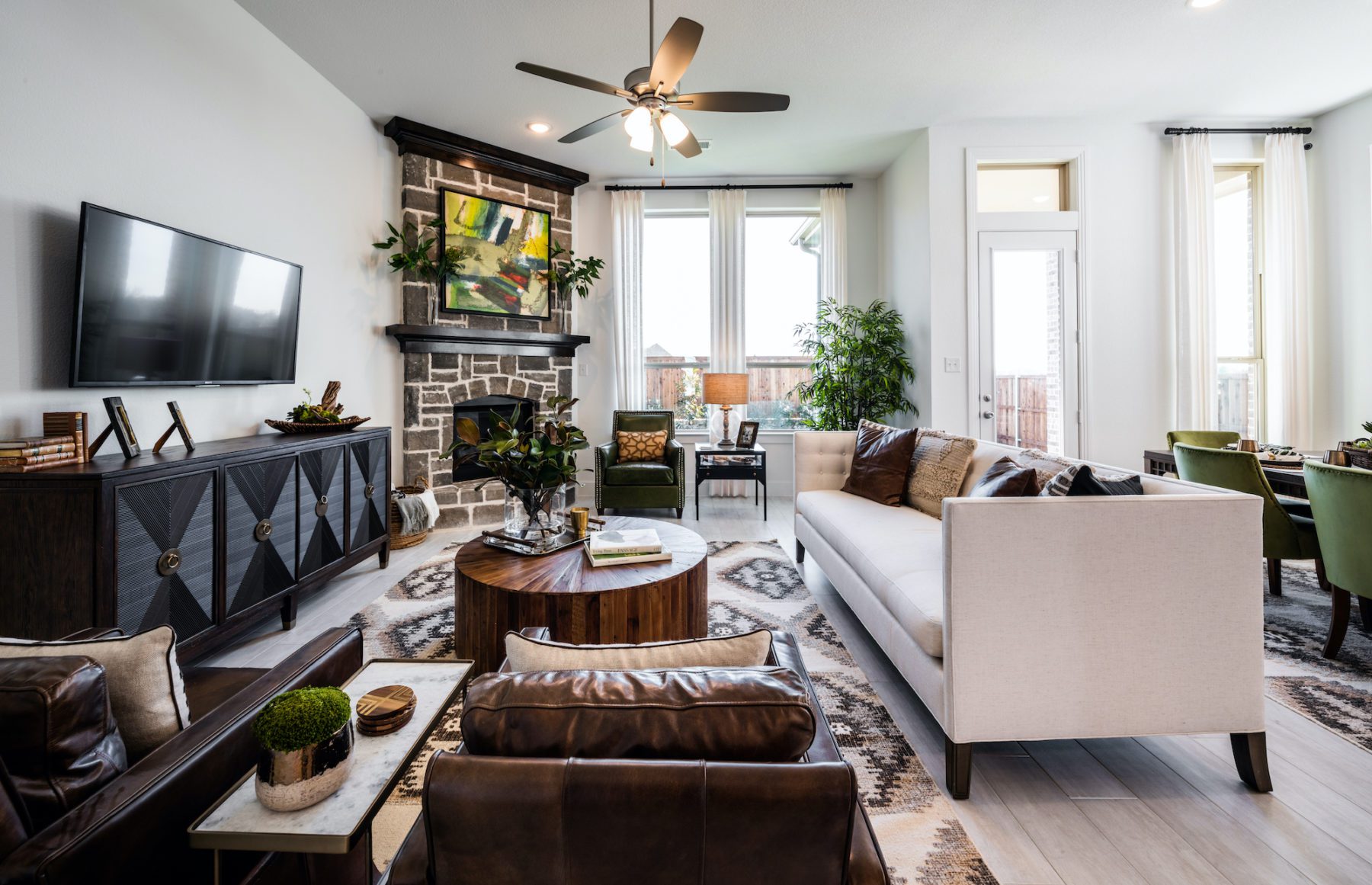
Where do you start when you’re ready to look for a new home? Your first thought might be to jump in the car and begin touring new home communities, and that’s perfectly valid. But without focus and a few ideas about what you want, you may be burning a lot of gas and time and seeing little in the way of results.
Virtual home tours are a great starting point. They were already popular before the pandemic, but in the last few years, the benefits of virtual tours have become more apparent, and the number of virtual home tours has been increasing. The pandemic accelerated the use of many virtual services, especially those for home buying. In 2021, 35% of marketers used virtual reality to market products and services.
Should you buy a home entirely via an online platform? There are many things to consider when purchasing a home, and some intangibles are not easy to gather from a virtual platform. But virtual tours are an excellent place to start the homebuying process while also avoiding the time and hassle of loading the family in the car and driving to multiple communities.
Here are our tips for getting the most out of a virtual homebuying experience:
Establish Priorities
Location will likely be the first factor you will want to consider. Do you want to live in the city, the suburbs, or in a more rural area that has a small-town feel? Consider the different price points in each of these types of communities and how this affects the size of home you can afford.
Next, take some time to talk with family members about the most critical priorities for your next home. It could be helpful to make three lists: must-haves, nice-to-haves, and the icing on the cake.
For instance, four bedrooms, great schools, and a community pool and recreation area may be must-haves. Maybe your nice-to-have is a park nearby and walking trails for family fitness. Perhaps the icing on the cake is a nearby fishing pond.
Keep your location preferences and critical priorities in mind as you begin to browse communities and homes online.
Take Virtual Tours of Homes by Different Builders
Once you have identified some locations you like, look for available homes online. There are many excellent new home communities that offer the charm of small-town life just a short drive from the excitement of the city.
Visit some new home community websites. Do they have homes for sale with virtual tours? Can you do a virtual home walkthrough or even a tour of the community’s amenities? These options give you a place to begin investigating.
Most new home communities offer several builders for potential residents to consider. Take virtual tours of homes in the community built by different builders. Look for an easy way to compare prices and features the builders offer. This comparison will give you an idea of your options and whether the community fits your needs and budget.
Does the house look like a place you could comfortably live? Can you see yourself walking in at the end of a long day and sighing with relaxation? Perhaps enjoying family time at the pavilion and pool?
Write Down Your Questions
When touring a home or neighborhood virtually, it is easy to forget some of the most important questions to ask. Builder’s warranties, HOA policies, utility providers, and future development plans in the area are a few things you may want to learn more about.
If you write down the questions while shopping online, you’ll have those in hand when you are ready to visit a few communities in person. When touring physically, you’ll quickly be able to compare neighborhoods based on similar criteria.
Explore the Area
It’s just as important to know what’s around your new home and neighborhood as it is to have the ideal home. Once you’ve selected a few communities from virtual tours, take a little time to explore the surrounding areas. You can even do this online to narrow your search further before visiting in person. Online tools like Google Maps and Google Earth make this much easier than you might think.
Lilyana by Hillwood is conveniently located in beautiful Celina, Texas within the growing Collin County. The appealing area and proximity to Frisco and Plano make it an ideal location for a busy family, with shopping, dining, major corporate centers, and entertainment just a short drive away.
Investigate the Schools
One of the most critical priorities for families buying a new home is to ensure that the schools have academic excellence and extracurricular variety that keep students engaged in learning.
Lilyana is located in the highly rated Prosper School District, and children in the community attend Johnson Elementary School, Rogers Middle School, and Prosper High School. Lilyana Elementary School, located within the Lilyana new home community, is slated to open in fall 2023.
Make an In-Person Visit to the Communities You Like Best
A virtual tour is a wonderful tool to help narrow down your search. Once you have a pared-down list of the new home neighborhoods that excite you the most, go! Set an appointment to visit and get a feel for the place.
This stage is where the intangibles are most important. What is the feel of the neighborhood? Is it a place you could call home? Do the amenities measure up to the online version? Are your most-used services close to home?
Come Home to Lilyana by Hillwood in Celina
The families coming to Lilyana by Hillwood are not looking for a house; they’re looking for a home. They want a place to live whole, happy, and satisfying lives, which is what our residents have found here. Find your new home by viewing our builders and the designs they offer at our community.
Lilyana welcomes you and your family to come and see our beautiful community. Contact our builders to schedule an in-person tour of model homes and Lilyana’s many amenities.
Posted on September 15, 2022 by Globe Runner Team
What Should I Ask when Buying a House?
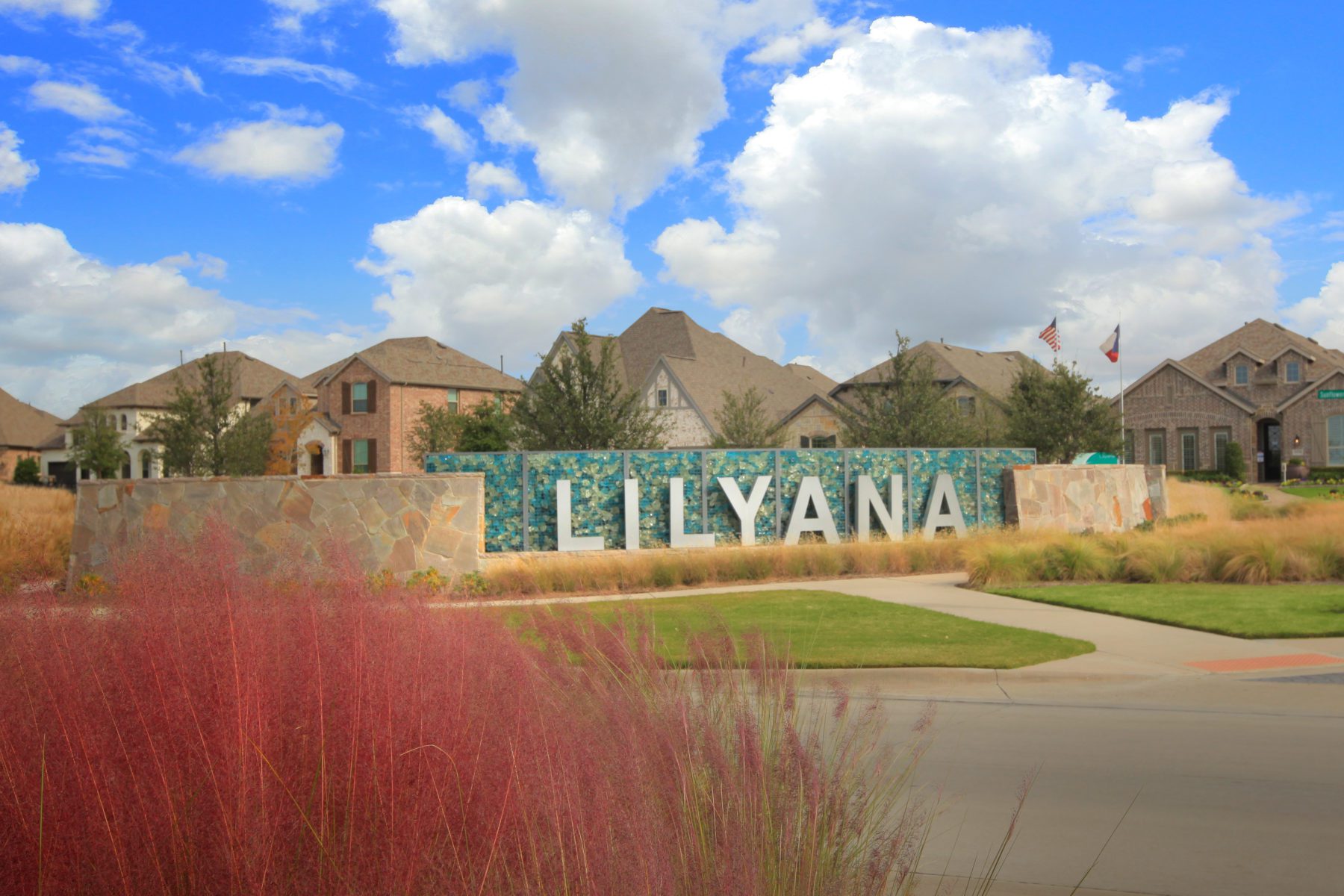
Buying a new home is a thrilling experience, but it’s important to make sure your new house is a good fit. That not only means familiarizing yourself with the home, its cost, condition, etc., but also the surrounding community. Whether you’re a first-time homebuyer or you’ve been around the block already, here are some excellent questions to ask when buying a new construction home in a new home community.
1. Who is the builder?
You want a builder who has a good track record and who stands by their work. Asking who built the home you’re considering can help you evaluate the overall quality of its construction. By choosing a home from a reputable builder, you can be certain that the house conforms to a high standard of craftsmanship.
At Lilyana by Hillwood in Celina, our builders are American Legend Homes, Highland Homes, and M/I Homes, all of whom are known for building high quality homes that homeowners love.
2. How much are HOA fees, and what do they cover?
Many of the best new home communities have homeowners’ associations. This is typically a good thing. In fact, one survey shows that about 73% of Texas residents believe their HOA provides needed value and support, so it’s worth asking about the local community association.
Naturally, you you’ll want to ask about fees, but don’t stop there. In addition to the total cost, make sure you get details on what those fees cover, whether that includes landscaping, maintenance of parks and common areas, etc.
3. What are the HOA’s rules?
HOA rules are also important. To make sure a community is a good fit for your family, you’ll want to get some details on the kinds of requirements the association has regarding the aesthetics of the houses in your neighborhood, noise complaint policies, parking guidelines, decoration restrictions, and so forth.
4. What’s the local school district?
For many, the key to a good community is a good school system. Asking about the local school district can help you make sure your child will get a good education. In addition, the quality of the school district often reflects the community as a whole.
A highly rated school district—such as Prosper ISD in which Lilyana resides—can be a major selling point for anyone looking for a place to live.
5. What community amenities are there?
New home communities often have shared amenities, so it’s good to choose a place that has options you and your family will enjoy. Those might include a community pool, parks, playgrounds, walking trails, pavilions, and more, so find out what the area has to offer. For instance, Lilyana has a number of scenic parks (including one with a pickleball court!), a beautiful pool, an outdoor kitchen and even a catch-and-release fishing pond, which can be wonderful for families who love the outdoors.
6. Who provides utilities?
Local utilities are, of course, vital. The city or companies supplying your utilities such as electric, gas, water, telephone, and more are not only important to know once you move in, but also a potential deciding factor beforehand. Cities with reliable services are more likely to provide a favorable experience and prompt repairs in the event of an outage.
7. What’s nearby?
Of course, it’s not all about what’s in the neighborhood itself. Location is a major deciding factor for many people moving into North Texas, and proximity to city amenities can be a major selling point. Asking what cities, stores, hospitals, airports, and other resources are nearby can help you decide whether a given neighborhood is a good fit. For instance, Lilyana’s proximity to Frisco, TX makes it a great option for people looking for a quiet neighborhood with small-town charm that is just a short drive from a vibrant city that offers a fantastic selection of shopping, dining, entertainment, and employment options.
8. What future developments are planned for the area?
Finally, new home communities are likely to continue growing long after you move in, so it can be helpful to consider what developments are planned for the neighborhood you’re looking at. If the aesthetic of the home’s surroundings is a selling point for you, you’ll want to make sure those surroundings will remain attractive for years to come.
Buying a New Home? Check Out Lilyana by Hillwood!
Asking the right questions when buying a house is an important part of making a purchase you’re happy with. If you’re researching homes near Celina or Collin County, you’ll want to consider Lilyana by Hillwood. Many answers to common questions can be found here, and you can even take a virtual tour to get a feel for the neighborhood. If you have further questions, get in touch!
Posted on May 15, 2022 by Taryn Dandurand
How Celina & Collin County Are Changing
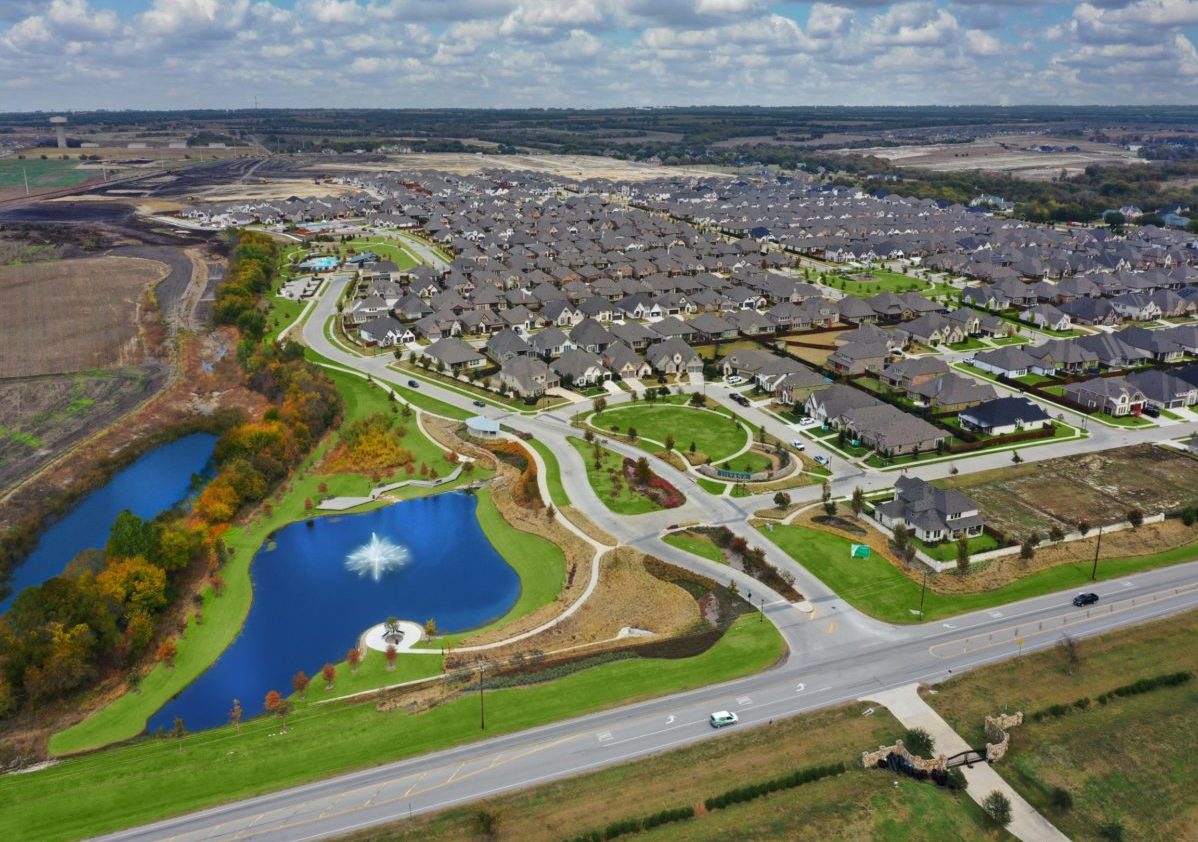
Celina is one of the fastest-growing cities in North Texas, and that growth is due in part to the many changes that have been made in the city and Collin County as a whole. In this article, we’ll take a look at how Celina and Collin County are changing for the better and what that means for you.
Recent Changes in Celina and Collin County
The changes made in Celina and Collin County in recent years benefit long time residents, brand new residents, real estate investors, and more. Here are a few of those positive impacts.
An Ideal Communities for Families
First is the construction of new home communities. These communities are built from the ground up with convenience and quality of life in mind, making them the ideal places to move in, raise a family, and become a part of a wonderful neighborhood.
Lilyana is one such community. Here, we offer a wide range of amenities including a fishing pond, parks, playgrounds, sports courts, biking trails, and a resort-style pool, all within the acclaimed Prosper ISD.
A Great Place to Work
Not only is Celina great for raising a family, but it’s also an ideal location to work. Between the years of 2010 and 2019, over 202,000 jobs were created in Collin County, making it a prime location to either start your career or take it to the next level. In addition, the average commute time in the county is under 30 minutes, and initiatives have been passed to improve roads used by those with longer commutes.
Attractive Real Estate Incentives
Further feeding into the population explosion in Celina are the prime opportunities for real estate. To encourage real estate investment and expansion in the area, the city of Celina has a number of programs that are of special interest to those wanting to build within the city. These include such programs as:
- The Neighborhood Empowerment Zone (NEZ), which reduces fees for commercial and residential construction in the area.
- Downtown Improvement Programs (DIP), which reimburses half the cost of “meaningful additions to the public realm,” such as public art, lighting, façade improvements, etc.
- Residential Tax Reinvestment Program (RTRP), which covers tax increases (one-time only) from improvements and expansions on residential properties downtown.
Business owners, builders, and real estate investors can benefit from these incentives, drawing more commerce to the area as a result.
Continuing Improvements
Not only has Celina seen recent improvements, but those improvements are likely to continue. For instance, the city recently announced an $8 million project that would enhance various aspects of the city, such as drainage, parking, water lines, and more. This project and others will continue to increase the quality of life in the area, attracting more people.
Celina Vs. Prosper – A Quick Comparison
Celina isn’t the only city to see changes for the better; neighboring Prosper is also an excellent place to move to. To understand what both these cities have to offer, let’s look at some quick comparisons using the latest census data.
Homeownership
Homeownership in both Celina and Prosper is high, with percentages reaching 80.7% and 86.4% respectively. This is much higher than the 65% in Collin and Denton counties as a whole.
Average homeowner costs (minus mortgage) are higher in Prosper at $1,133 per month versus $827 in Celina, which is closer to the median for Collin County.
Population
Population-wise, Prosper is home to more households than Celina (6,634 versus 3,466 at the last census). Prosper also has a slightly higher average number of persons per household. In 2010, however, Celina had a higher population per square mile at 430.2 versus Prosper’s 417.3. Naturally, that number has likely increased significantly as the city has grown.
Convenience
The most current data available (2012) from the U.S. Economic Census shows both cities are booming economically, with retail sales of $23.6 million in Celina and $35.4 million in Prosper. Ready access to shopping and comfortable commute times (just under 35 minutes for both Celina and Prosper) make these cities convenient, desirable places to live. In fact, from 2015 to 2019, most residents of these towns reported living in the same home they did the previous year (84.6% in Celina and 83.7% in Prosper).
Find a Place Where Tranquility and Convenience Meet
If you’re looking for an excellent place to live, Celina—and specifically, Lilyana—is a place where tranquility and convenience meet. Learn more about our location or get in touch to discover why people love living in Lilyana by Hillwood!
Posted on March 15, 2022 by Taryn Dandurand
The Prosper Promise: An Educational Partnership

Prosper ISD is an acclaimed Texas school district serving the Prosper community and other select areas. The Prosper, TX ISD is home to numerous preschools and elementary schools, four middle schools, and a high school, all of which are committed to providing the best possible education to students.
Families who live in Lilyana by Hillwood, the new home community in Celina, Texas, can send their kids to Prosper schools and many are familiar with the Prosper ISD benefits. In this article, we’ll go over what parents love about Prosper ISD schools, starting with Prosper Promise.
What Is the Prosper Promise?
The Prosper Promise is centered around Prosper ISD’s commitment to creating long lasting partnerships with students, parents, staff, and the community. The program offers parents of students in Prosper schools many opportunities to connect with school administrators, teachers, and each other through events and volunteering. Here are some examples:
Community Events
The school district hosts various events designed to bring people together. Informational events include campus tours, presentations, seminars, and so forth, while other community events include gatherings such as luncheons, community workouts, and charity events.
Prosper Education Foundation
The Prosper Education Foundation (PEF) is composed of community members who help support the ISD’s goals of academic excellence, innovation, etc. The foundation raises funds for important initiatives, and it gives community members an opportunity to participate in educating the next generation.
Advisory Committees
Prosper’s advisory committees serve the school district in a number of ways. Committees include the Superintendent Parent Advisory, School Health Advisory Council, Prosper Parent Ambassadors, Prosper University, District Improvement Committee, and several others. These committees allow parents to have a say in their children’s education while also connecting with other parents.
What Prosper ISD Offers Students and Parents
As parents, teachers, students, and community members all serve together, Prosper ISD schools are able to offer students the best education possible while also helping everyone grow together as a community.
Some of the benefits of living in the Prosper ISD include:
Excellent Education at All Levels
Prosper is committed to helping students graduate, and the figures speak for themselves. On the whole, Prosper ISD boasts one of the highest graduation rates in the state at 99.1%. In addition, a large proportion of graduates are considered college ready, with about 60% of students reaching proficient levels of reading and math for their grade level (statewide average is 44%).
Experienced Staff
One of the keys to quality education is experienced staff. Prosper ISD has highly competent teachers, with the average experience level hovering just over 10 years. The majority of staff have at least a bachelor’s degree, and about 30% have master’s degrees. The attention your child gets during class is also relatively high, with a student-to-teacher ratio of 15.8 to 1.
With experienced staff members and smaller classroom sizes, you can be confident that your child will get the support they need from highly qualified staff.
Opportunities to Connect
As mentioned above, Prosper ISD has many opportunities to connect, whether that’s through the community programs listed above or extracurricular activities offered to students. The school district has various traditions that can help students feel like they’re part of something greater.
The diverse Prosper ISD has a broad range of ethnicities represented and 65 languages spoken in the district. This sets the stage for building a culture of inclusivity and understanding in the rising generation.
Parents also have the opportunity to play an important role in their children’s education by participating in advisory committees, community events, and more.
Lilyana’s Partnership with Prosper ISD
Lilyana is located within Prosper ISD, with students attending these schools:
We are also partnering with Prosper ISD to bring an on-site elementary school to our community, making your child’s education an integral part of the lifestyle at Lilyana. Parents love the convenience of having their child’s elementary school right in the neighborhood. And studies show that walking or biking to school is good for kids in numerous ways.
We’re excited to be working with Prosper ISD to bring quality education right into the heart of our neighborhood!
New Home Community in Prosper ISD
In addition to an award-winning school system, Lilyana by Hillwood offers many other amenities and opportunities to connect with neighbors and friends, all while maintaining a family-friendly community layout. To learn more about our new home community, take a virtual tour or get in touch!
Posted on February 15, 2022 by Taryn Dandurand
6 Signs You Need a Bigger Home
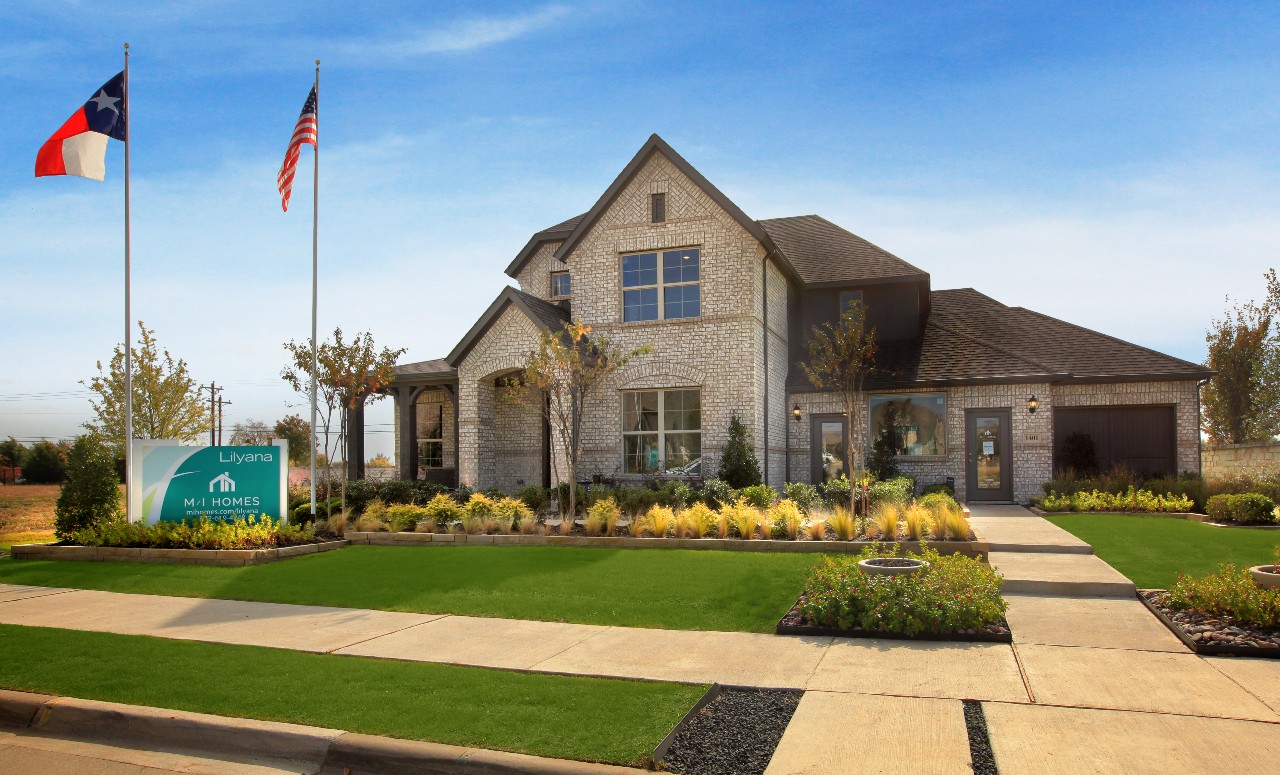
Have you grown out of your house? If you have been living in your home for a while, you probably have created a lot of happy memories there. And when you’ve put a significant amount of time and effort into choosing and decorating your home, you may feel attached to it. Though this is perfectly normal, it does keep some families from recognizing when they need to find a bigger house.
There are many telltale signs your house is too small, but most people don’t realize them right away. Below, we’ve assembled some key reasons to explore buying a bigger house.
1. Your Family Has Grown
There is genuinely very little that can prepare a family for the addition of children. When an individual or couple first buys a home, they may look at the location, the aesthetics, and the flow of the living space. However, when a family adds children, the same people will suddenly have to prioritize extra bedrooms, room to play, and outside safety. What was important to you during your childless years fades away the minute your child is born.
If your family has grown, it’s likely time to move to a bigger house. Not only do you need extra bedrooms for the kids, but you also need space for grandparents and visitors to stay. You also need to account for your own needs, including having a separate space just for you.
2. You Have an Active Social Circle
Many people like to host friends and neighbors at their homes. Entertaining is a fulfilling and exciting part of life, especially once you’ve tired of going out to clubs and bars on the weekends. However, if you’re resisting the urge to entertain or you feel cramped when people do come over, these may be signs your house is too small. If you love entertaining but can’t do so comfortably, your home is no longer meeting your needs.
3. You’ve Run Out of Storage
People accumulate a lot of stuff over time. Though you may donate to charities and throw things away, you will find that you need things that you didn’t need before as your family grows. So, if you find yourself tripping over your stuff or renting a storage unit, it’s time to consider a bigger house with more room for your things.
4. You’re Working From Home
In the wake of the Covid-19 pandemic, millions of people are working remotely to avoid contracting the virus. For many companies, this change is permanent. If you are working from home, it’s important to establish boundaries, both physical and mental, between your personal life and your work life. Usually, this means establishing a separate place to work, such as an office or a study. If your home doesn’t have room for that, you may need to move to a bigger house.
5. You’ve Lived in Your Home for a While
One in four Americans feels that they’ve outgrown their home space after only two years of living there. If you’ve lived in your home for several years, it’s important to really take a look at your home and your lifestyle. It’s time to assess whether your family truly fits in your house anymore. Chances are, you’ll find that more space is needed.
6. You Don’t Have Privacy
Whether you live with a partner or children, you must have some privacy and time to yourself. This allows you to take care of your own needs and cultivate your own interests. If your home offers no private place to relax or get away from others in your household, it’s too small.
Take a Look at the New Homes at Lilyana by Hillwood
Ultimately, if you’re constantly asking yourself, “Should I buy a bigger house?” the answer is likely yes. There are many advantages of buying a bigger house and once you’re enjoying your new space, you’ll wonder why you waited so long! If you’re looking for a larger home, come see the new home community at Lilyana by Hillwood in Celina, Texas. We’ve established a vibrant and welcoming community with fantastic amenities, a convenient location, and exceptional Prosper ISD schools.
If you are ready to upgrade to a bigger home, contact us online or take a virtual tour. We’re here to help you into a home that truly fits.
Posted on January 15, 2022 by Taryn Dandurand
What to Know About Buying a Builder’s Spec Home – and Why it’s a Smart Move
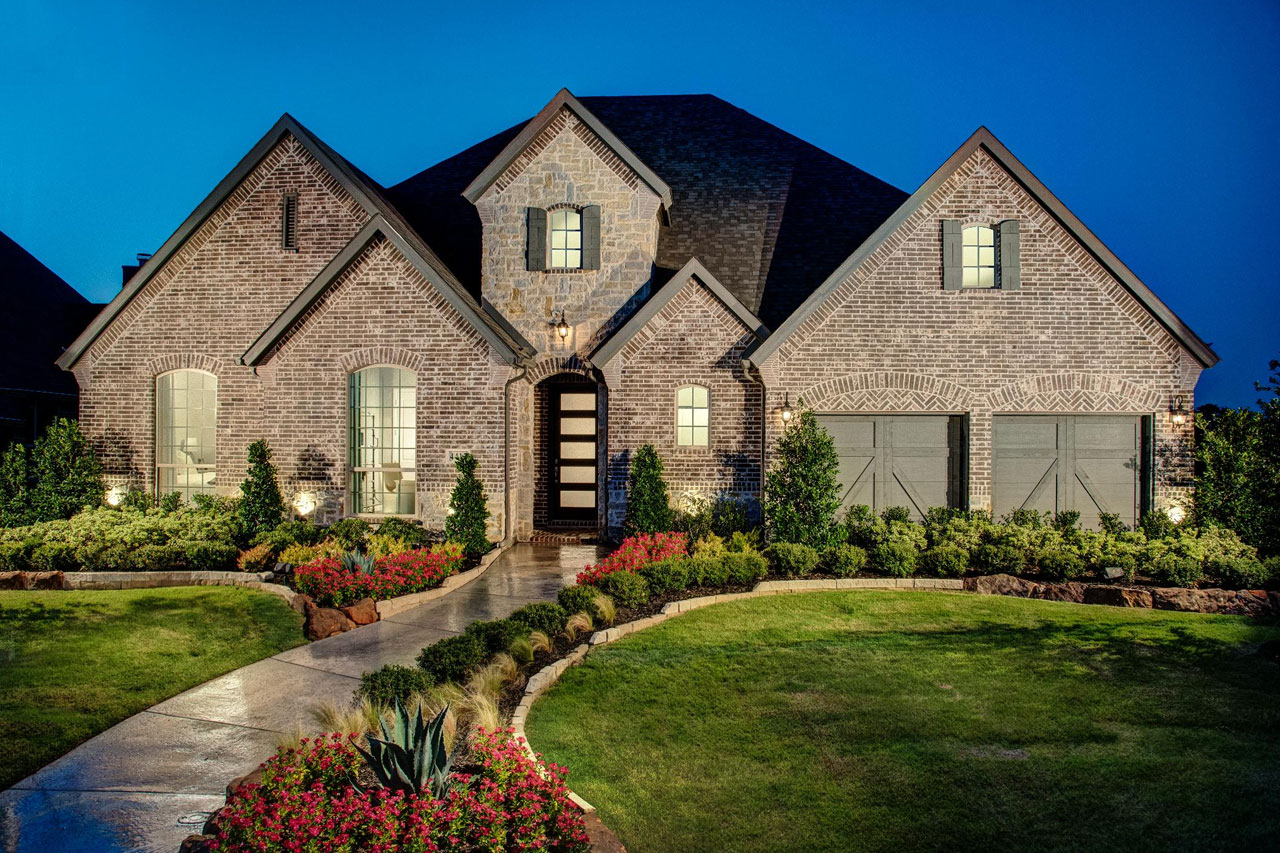
You’ve probably heard of a spec home, but what about inventory, showcase, or feature homes/houses? Same concept. Different names.
Ok, so what is a spec home? Buying a spec home, meaning a quick move-in house crafted with builder-selected finishes and other designer options, is a great choice for some homebuyers. Speculation homes are ideal for those who prefer to live in a new home community like Lilyana by Hillwood in Celina, TX but can’t wait 6-12 months while their home is being built.
Now that you’re up to speed on the term’s meaning, let’s run through the benefits and tips for buying a spec home.
Spec Home Benefits for Buyers
- Less time. Some new construction homes can take up to a year to complete. That makes the time and cost savings associated with spec homes all the more appealing, especially considering that rising North Texas home prices may increase even more next year. Can you afford another 21% increase? If not, it’s time to move quickly. Also consider that when your move-in date is a moving target, as with new construction, it can really complicate things like knowing when to sell an existing home. For immediate availability of a brand-new home, there’s almost no quicker option. You can put an offer on a house the same day you see it (or while it’s under construction in many cases) and typically close on it within a matter of weeks.
- Fewer decisions. Building “from dirt” isn’t just time-intensive, it can also be labor-intensive. Depending on your choice of builder and home design, you may need to make a flurry of decisions on everything from the wall and trim color to flooring, countertops, and tilework throughout the house when doing a build from scratch. When you choose a spec home, this type of heavy lifting has been done for you. Most builders have a team of designers that plan these finer points in concert with one another.
- No surprises. You may prefer to see what your house is going to look like before you spend hundreds of thousands to buy it. With a spec home, you know exactly what you’re getting down to the last detail. You’ll have the opportunity to test everything out on your walk-through and ensure the space is just right.
- More affordable. Buying a home is a huge investment! Spec houses are typically efficiently constructed with high-quality appliances and finishes. Those savings and smart design options get passed on to the buyer. Given how quickly the housing market in North Texas changes (the area is up 18% year over year), every little bit helps!
- Reduced risk. With existing homes and model homes that were built years ago, you never really know what you’re going to get. Take down a wall and you could discover a hidden mold infestation or expensive wiring issue. Build from the ground up and you may regret your choices down the line, especially if you’re known to be indecisive. Builders plan their spec home designs and home features around lasting trends with the most popular appeal, so you have a better chance of eventually selling the home and recouping your investment, or living there forever!
- Modern amenities. Who has time to research all the latest and greatest? Leave it to the spec designers to know which in-house and community amenities will resonate most with modern homebuyers.
Spec Home FAQs:
Knowing what questions to ask when buying a spec home can help smooth the process and leave you feeling confident you’ve made the right choice. Here are some frequently asked questions about inventory homes:
Why is it called a spec home?
The term is short for speculative venture. Builders construct homes to be sold as-is or with minimal changes to some colors and finishes.
How do I buy a spec home?
The process is similar to buying other new and existing homes. You can contact your real estate agent to schedule a showing or contact the builder for more information.
Is a spec home a model home?
No, model homes show different floor plans in new home communities and are usually only sold once the neighborhood is fully built if they are ever sold at all. Spec homes are built to sell as soon as they’re complete and some are sold during construction.
Are spec homes cheaper than custom homes?
Typically, yes. Customization can add up quickly and it’s easy to lose track of seemingly small upgrade costs. Spec homes take the guesswork out of the home price.
Once you understand the process of buying a spec home and how it can benefit you as a buyer, the next step is to get in touch with the new home community of your choice and inquire about their spec home inventory.
Come Take A Look at Lilyana by Hillwood
Want to move into a new home community? Lilyana by Hillwood in Celina, TX within Prosper ISD is opening a new phase in early 2022 which will include spec homes and ready to build lots! Check here for the latest updates on our inventory availability.
Posted on December 15, 2021 by Taryn Dandurand
5 Reasons to Buy a Home in an Up-and-Coming Neighborhood
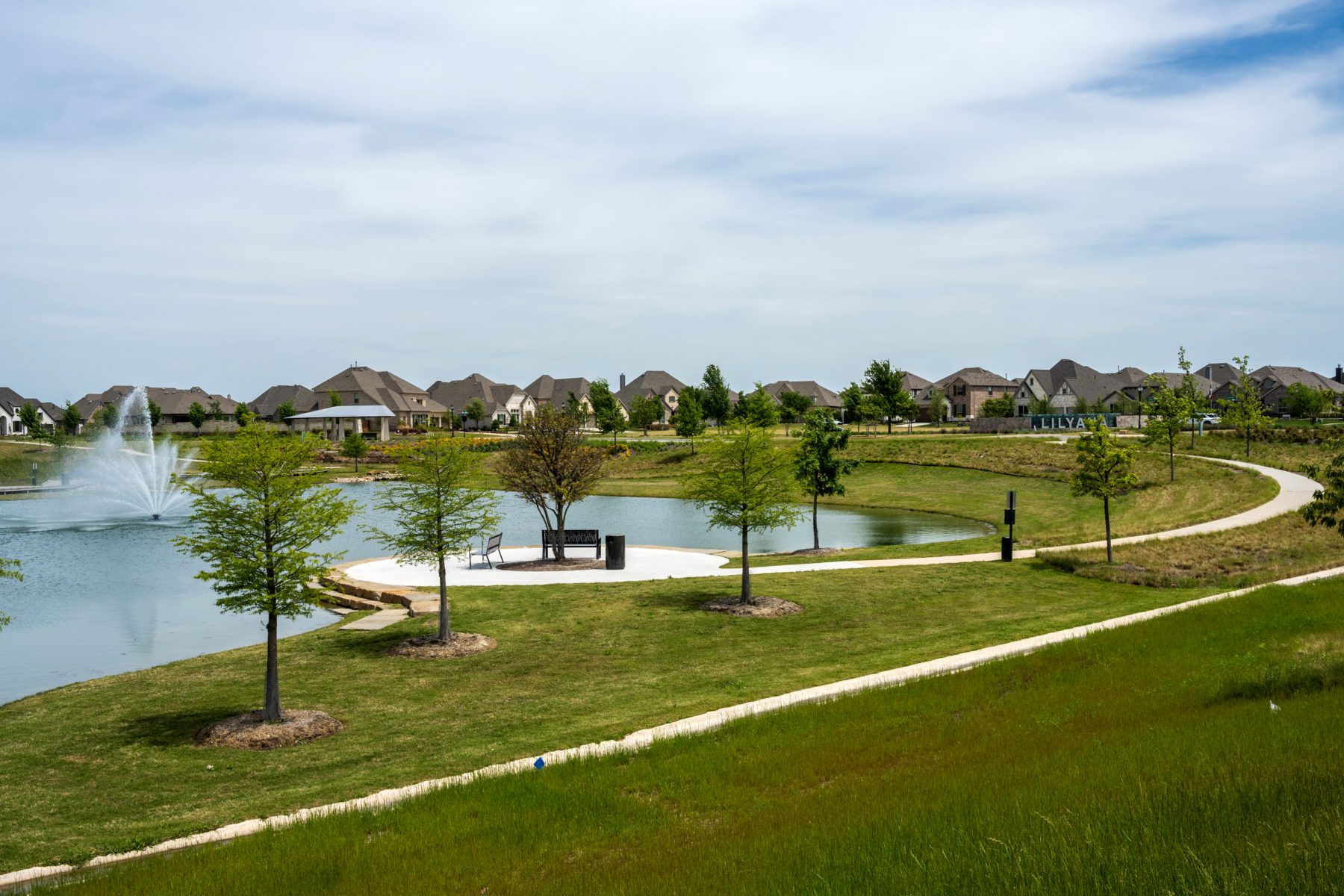
Homebuyers in North Texas typically look for homes in the best neighborhoods around. However, searching for a home in only the tried and true “best” neighborhoods can cause you to miss out on some great new home communities. These up-and-coming neighborhoods typically have many advantages over older, traditional communities, such as sustainably built, new construction homes, great schools, a lower cost of living, and a diverse array of amenities for residents to enjoy.
Buying a house in an up-and-coming neighborhood can be a great move for you and your family. Let’s go over the benefits of living in one of these fast-growing new home communities and discuss how to spot the signs of an up-and-coming neighborhood.
Common Questions About Up-and-Coming Neighborhoods
First, let’s clear up some of the most commonly asked questions about up-and-coming neighborhoods.
What is an up-and-coming neighborhood?
An up-and-coming neighborhood is a new suburban development that hasn’t become completely established yet. It’s still growing, making it an excellent place to put down roots for homeowners looking to get a lot of home for their money.
How do you spot up-and-coming areas?
When looking for the signs of an up-and-coming neighborhood, look for areas experiencing a lot of new growth. The population will be increasing, perhaps because of increased job opportunities in the area. These areas are often part of large metropolitan areas that are popular destinations for corporate relocations. Up-and-coming areas usually have many new homes under construction.
How important is the neighborhood when buying a house?
The neighborhood the home is in is important, or very important, to most people. According to a 2020 study by NAR, 62% of all homebuyers consider the quality of the neighborhood when making a purchasing decision.
Why is location important when buying a house?
Location is important because you’re not only investing in the house itself, but also the neighborhood. It just makes sense to choose a neighborhood based on if it will be an ideal place for you to live, and if you will have convenient access to work, shopping, medical care, and good school systems. In addition to these considerations, the location of a home also affects the amenities you will have access to. Some up-and-coming neighborhoods, like Lilyana by Hillwood in Celina, TX within Prosper ISD, offer an array of amenities for homeowners right within the community.
5 Advantages of Up-and-Coming Neighborhoods
Buying a house in an up-and-coming community can offer many advantages over moving to a more established, traditional neighborhood. The advantages you can typically see include:
1. Potential for Growth
First, the hallmark of an up-and-coming neighborhood is the fact that it’s still growing. That makes it a great investment opportunity since your home’s value is likely to grow with the community. The price you pay now for a home in one of these neighborhoods is likely to be lower than what you might pay ten years from now.
2. Proximity to the City
New neighborhoods tend to develop around city centers, and as a result, they are usually conveniently located to many of the amenities that large cities offer, such as shopping, entertainment and career opportunities. That means less time commuting and more time living life to its fullest!
3. New Businesses, New Opportunities
With the population growth that often accompanies up-and-coming communities, businesses will naturally be drawn to the area as well. That means more economic opportunity in the form of jobs, shopping, dining, and so forth.
4. Great Schools
As schools improve in an area, you’ll usually see more families move in, which can increase demand in the area and preserve home values. That helps solidify an up-and-coming community’s growth, meaning these neighborhoods are usually located within highly rated school systems.
5. A Strong Sense of Community
Finally, moving into an up-and-coming neighborhood is a great way to be part of the community. Rather than joining a neighborhood that has already been well established with its own culture and norms, you can help build the community as one of its integral members.
These neighborhoods also make great efforts to involve and welcome people through fantastic amenities, resident events, and thoughtful community layouts designed to encourage chance encounters with neighbors and friends.
Up-and-Coming Celina, Texas
When it comes to up-and-coming communities, Celina is the fastest growing city in North Texas with a population of over 30,000 people. That figure is nearly triple what it was in 2010, and it’s likely to keep rising in coming years.
Located just 10 miles north of Frisco, one of the most exciting cities in the Dallas-Fort Worth metroplex, Celina’s future looks bright. With its small-town charm, attractive incentives for small businesses, great schools, and wonderful new home communities like Lilyana by Hillwood, Celina is perfectly positioned for continued growth.
If you’re looking at buying a new construction home in an up-and-coming neighborhood, Lilyana in Celina, Texas fits the bill perfectly. Situated in the acclaimed Prosper Independent School District and in easy reach of lots of amenities—many of which are on-site—Lilyana is the perfect place to settle down and help build a thriving community. Take a virtual tour to see what Lilyana by Hillwood is all about or get in touch with us today for more information.
Posted on November 30, 2021 by Taryn Dandurand
Neighborhood Association vs. Homeowners’ Association, What’s the Difference?
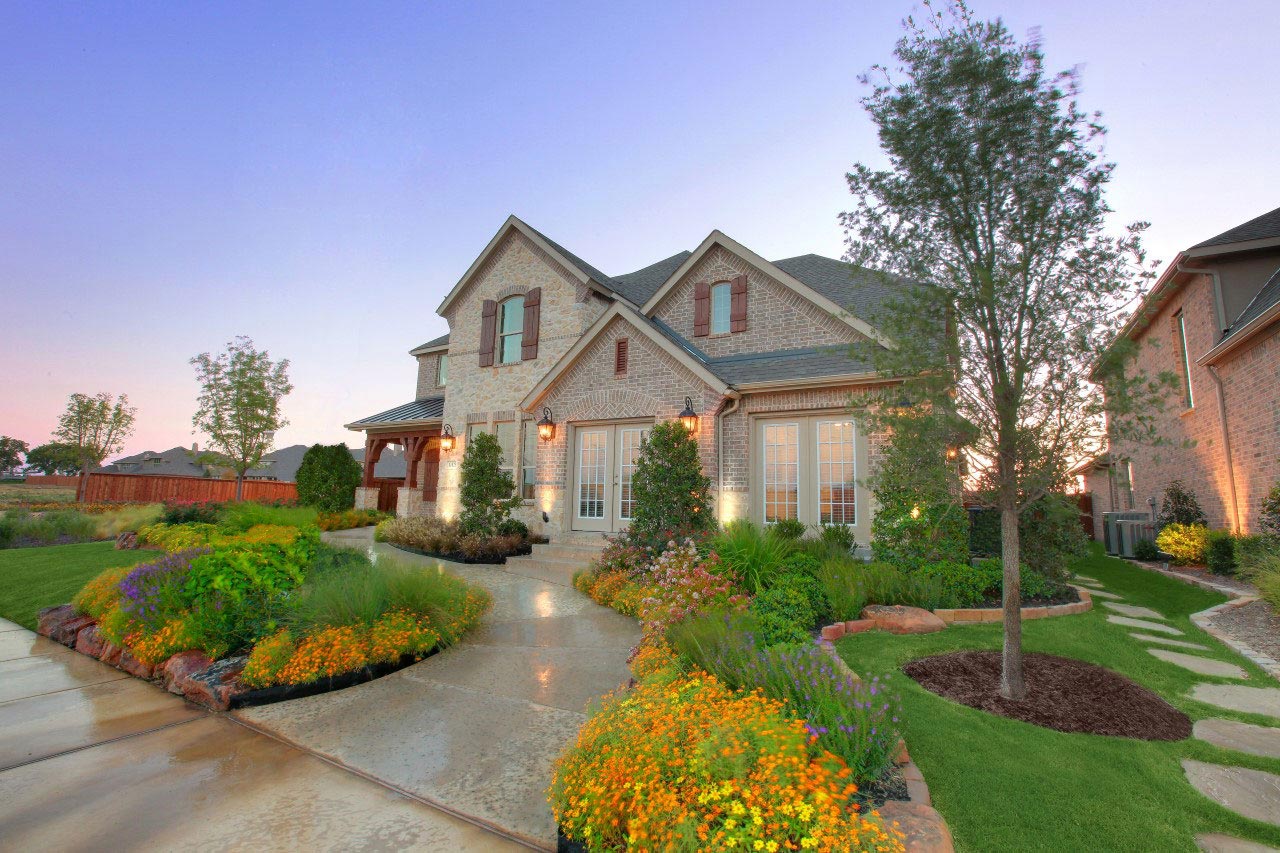
If you are a longtime homeowner, you may be familiar with the concept of homeowners’ associations and neighborhood associations. If you are shopping for your first home at Lilyana by Hillwood or elsewhere, you may not know the difference. Often used interchangeably and incorrectly, these similar terms can be misunderstood. Let’s compare neighborhood associations vs. homeowners’ associations for their similarities and differences.
What is a Neighborhood Association?
A neighborhood association, sometimes called a civic or a community association, is a voluntary not-for-profit organization, organized by residents of a specific area. The purpose of these groups varies depending on the intent of its organizers.
These organizations are strictly voluntary and are typically open to anyone who is interested in being involved in the community, including renters and also local business owners, law enforcement groups, schools, churches, businesses, etc. The association board, made up of volunteers, runs the entity and creates committees to handle issues such as social events, neighborhood crime, beautification, and other areas of concern. Dues for such an organization may be between $20 and $100 per year depending on the benefits members receive.
Many neighborhood associations are formed to bring residents of an area together socially and also to represent the community in dealings with the local government. The group will often take on projects to improve the neighborhood’s appearance or augment government-provided maintenance of local parks and natural areas. Of course, these efforts are totally voluntary and their success depends on the level of participation achieved within the community, which varies greatly.
Sometimes neighborhood associations become an outspoken advocate for or against a particular community issue. For example, when the City of Dallas wanted to change zoning laws on a property it owned in a community, a local community association got involved to oppose this change. The group tried to publicize the drawbacks the change would cause for the neighborhood, encouraged residents to contact their elected officials, and circulated a petition opposing the rezoning. Their efforts ultimately failed.
What is a Homeowners’ Association?
What is a homeowners’ association (HOA)? An HOA is an organization in charge of governing a neighborhood or community. In most cases, the association provides services and maintains many portions of the community in exchange for monthly or annual dues.
HOAs are private entities led by a board of directors. Sometimes, homeowners can become members of an HOA when they buy a home in an HOA community. In exchange for the benefits and privileges provided by HOA membership, the members are asked to comply with the organization’s rules.
These rules are in place to create harmony within the community and also to ensure that the integrity of the neighborhood’s aesthetic is maintained. HOA guidelines govern items such as home color, fence height, setbacks, home and landscape maintenance, and other concerns that affect the appearance of the community. These regulations protect homeowners’ investments by preventing a rogue resident from painting their home a garish color or letting their fence deteriorate into a pile of matchsticks. Neighborhood associations do not get involved in these types of issues.
Many master-planned communities in Texas use HOAs to manage the neighborhood and maintain the communal facilities that are on-site. For example, the new home communities developed by Hillwood Communities in the Dallas-Fort Worth, Austin, and Houston areas have homeowners’ associations in place. The HOAs in these developments maintain the neighborhoods and provide an amazing array of services for homeowners.
Managing the daily details of large communities is a full-time job and too much to ask of a volunteer board. For communities like these, an HOA management company handles the daily administration while the board serves as overseers. The services provided by HOA management companies are first rate and residents can rely on these professionals to keep their communities looking great and running like a well-oiled machine.
What do HOAs at Hillwood Communities Do?
The homeowners’ associations that take care of Hillwood’s master-planned communities provide amazing services for homeowners. The HOAs at our properties maintain the resort-style pools, amenity centers, and sports courts that are exclusively for the use of our homeowners. The HOAs at some of our communities also support additional services like front-yard maintenance or a community garden. HOAs at our bigger communities run robust lifestyle programs that allow resident to enjoy scheduled activities and events with their neighbors. Of course, the amenities and HOA dues vary by community and not every community has every amenity.
The HOA is responsible for maintaining the sparkling pool, pavilion, outdoor kitchen, parks, and landscaped common areas at Lilyana by Hillwood, our very popular community in the fast-growing Celina, TX within Prosper ISD. Exciting news: we just finished a new amenity! Bluebonnet Park recently opened and features a covered pavilion, bocce ball and sport courts, gas grills, and a deluxe play area for children!
Frequently Asked Questions about HOAs
What is an association fee?
That depends on the type of association. A neighborhood association fee is a membership fee in a voluntary neighborhood organization. A homeowners’ association fee is the cost that homeowners pay for the maintenance and upkeep of the common areas of their community. Examples include maintenance of swimming pools, landscaped common areas, outdoor kitchens, pavilions, sports facilities, fitness centers, clubhouses, and other similar amenities.
How often do you pay HOA fees?
This depends on the HOA. Some ask that you pay monthly while others have a yearly or bi-yearly payment. HOA fees at Lilyana are $805 per year. This amounts to far less than you could expect to pay for a membership in a country club, or for annual upkeep of a home swimming pool.
Are HOA fees included in mortgage payment?
No, HOA fees are not included in your mortgage payment. HOA fees typically are paid directly to the HOA itself or to the HOA management company. FirstService Residential manages the HOA at Lilyana.
Come See the Amenities at Lilyana by Hillwood
Still not sure of the difference between neighborhood association vs. homeowners’ association? Drop by Lilyana for a visit and we will explain! Take a look at our beautiful community of gorgeous new construction homes and all the fantastic amenities you can enjoy as a homeowner. If you prefer, take a virtual tour or contact us online.
Posted on November 15, 2021 by Taryn Dandurand
Building a New Home Vs. Adding On
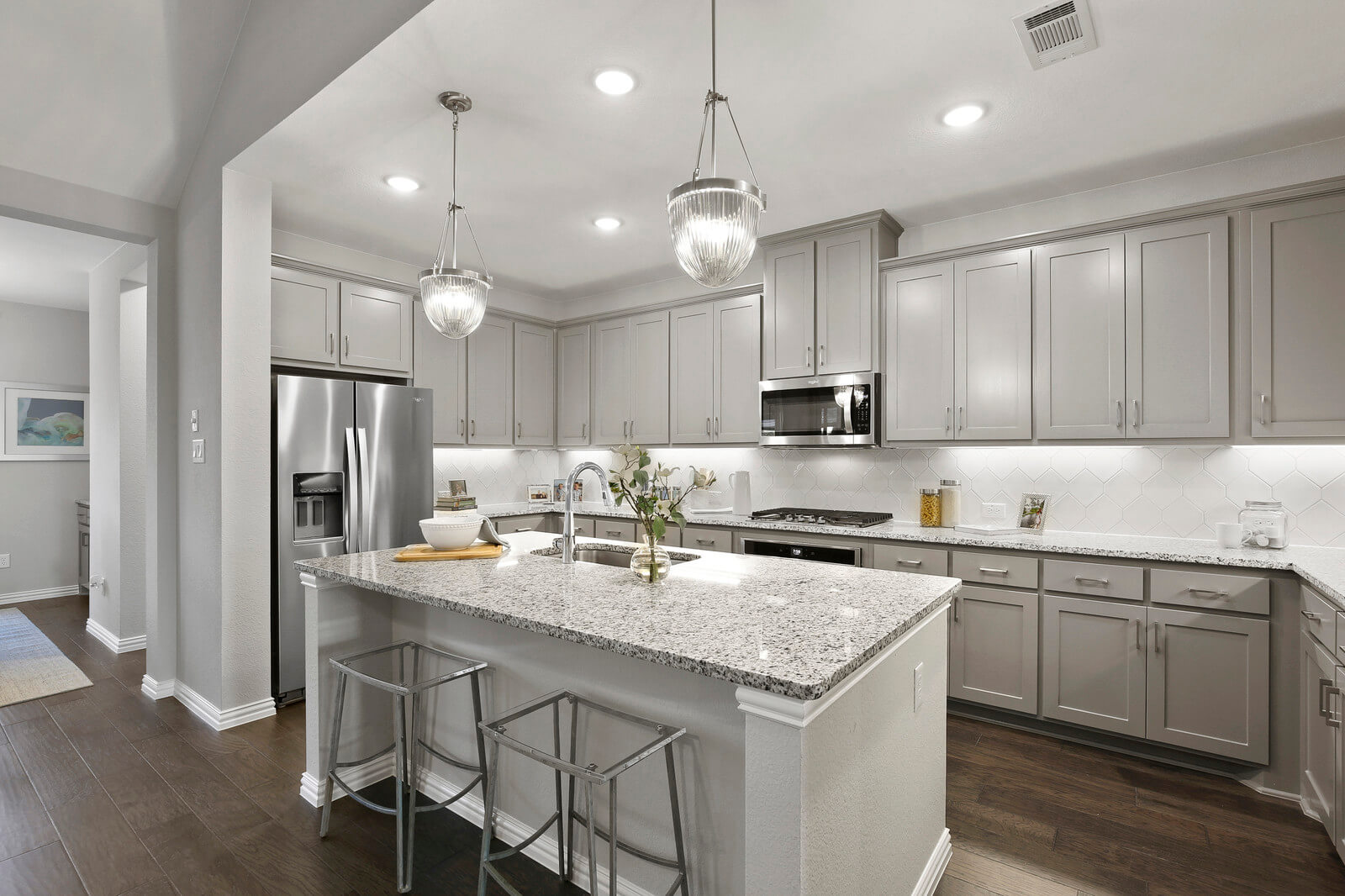
Are you in desperate need of another bedroom due to an impending arrival? Maybe you can no longer make do with an apartment-sized kitchen. Regardless of the specifics, if your current home is no longer meeting your needs, it’s time to make a change. But is the solution to build an addition to your home? Or is it better to just move to a different home altogether? The build an addition or move question has troubled many a homeowner. Below, we’ll help you evaluate the pros and cons of adding-on to a house vs. building a new construction home.
Remodel Vs. New Construction– 5 Key Questions to Ask
Moving can be difficult, so many people ask themselves “Should I add on to my house?” if they think it will allow them to avoid a move. But adding-on to a house isn’t easy either. When deciding whether to build an addition or move, there are several factors to consider. Here are five questions to help you decide whether to build or remodel:
1. What Do You Need?
Make a list of essential features you must gain from build or remodel. What’s working for you at your current house? What’s not working? Answering these questions may help you determine if adding on is actually the best way to move forward.
2. What Is Possible/Allowed?
Once you know what you need, you’ll want to figure out what you can actually do. There are a number of possible limiting factors here, such as:
- Local zoning laws
- HOA and historic building restrictions
- Space limitations – you only do so much with your existing lot
- Structural issues, especially with older buildings
Determining what’s physically possible and legally permitted can help you determine whether you should build an addition or move.
3. What Can You Afford?
Aside from the physical and regulatory limitations, there’s the matter of money. In general, additions and renovations cost less than building new, but costs can escalate quickly, especially when you run into unforeseen complications. This is especially true in older homes, in which a relatively simple addition could wind up turning into a major construction project in order to bring existing systems and structures up to code.
4. Could You Get a Return on Your Investment?
Even if you can afford it, is it worth adding on to your home? As a general rule of thumb, you don’t want yours to be the most expensive house on the block. Put another way, you don’t want to pour money into a home that you will not be able to get back when you sell. Certain improvements, like adding a second bathroom or upgrading the closet in the primary bedroom tend to have a better ROI than adding a sunroom or a garage.
Building a new construction home is often a better investment, especially if you build in the right neighborhood. According to RCLCO, location is one area where buyers are least likely to skimp on, so relocating is often the better choice.
5. Can You Handle the Time and Stress Involved?
Finally, there’s the matter of how adding on or building a new home will affect your lifestyle. If you choose to build an addition on the house, you’ll need to either put up with the noise and dust of your construction crew or find another place to stay. This requires the added expense of paying rent on top of your mortgage payments. On the other hand, building a new home may take longer than renovating, but it’s much less disruptive.
Reasons to Build a New Home vs. Adding On
As you consider the above questions, it’s important to take into account the potential advantages of each option.
Reasons to Add-On or Renovate
Some homeowners choose to renovate for these reasons:
- Potential ROI – A two-story add-on could get you a 65% return on your investment.
- Lower upfront cost – Add-ons and renovations usually cost less upfront than whole new constructions—as long as nothing goes wrong, of course.
- Less time – Renovations usually take less time than new home builds, so you could save some time, if that’s important to you.
It’s worth noting that while renovating can be a good idea in the right circumstances, you need to go about it carefully. Some additions could make a home harder to sell (depending on your neighborhood), and you might have local limitations, so do your due diligence.
Reasons to Build New
Some of the reasons you might want to build a new home include:
- More control – You can choose your exterior design, floorplan, number of bedrooms and bathrooms, finishes, and more, right from the start.
- Fewer surprises – When you work with an experienced builder, like the ones that build the new homes at Lilyana by Hillwood, you know the cost of your home up front. Once you choose your design and floorplan, and make your selections on optional features and upgrades, your costs are set. You can even use Lilyana’s mortgage calculator to find out how much new home you can afford!
- Greater efficiency– New homes are designed to be more energy efficient than older homes and some are built with sustainably sourced and recyclable materials.
- Less stress – No need to live in a major construction zone or endure the financial stress of paying rent on top of your mortgage payment.
- It’s all new – New homes are still under warranty, and there’s less chance that something will break. And come on, who doesn’t love that new-home smell?
When you build new, you can get the home you want from the very beginning rather than trying to fix up something that may have more issues than you initially anticipated.
Build a New Home at Lilyana by Hillwood
Another advantage to building new is the chance to live in a master-planned community like Lilyana by Hillwood in Celina, TX! Located within the acclaimed Prosper ISD, Lilyana offers the advantages of small-town living just minutes away from the $5 Billion Mile in Frisco, TX. Come visit our community that has over 50-acres of green space and an array of amazing amenities or take a virtual tour instead. Contact us to learn more about Lilyana today.
Posted on October 15, 2021 by Taryn Dandurand
What to Know About Alternative Real Estate Companies
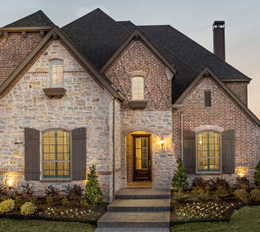
It seems alternative real estate companies and apps are springing up like weeds all over the world, offering homeowners and buyers various benefits, mainly the promise of savings. The number of alternative real estate options, also called third-party syndicated sites, is somewhere in the neighborhood of 175 right now. So how do these companies work, and should you use one of them?
Realtor Alternatives
Let’s take a look at a couple of the most popular alternative real estate companies on the market right now and examine how they work.
Zillow
People love Zillow. People love it so much that there was a sketch on Saturday Night Live earlier this year about how people escape the stress of the pandemic by looking at Zillow homes. Zillow is useful for researching neighborhoods, getting an idea of the style and size of a home you want, viewing photos of homes, and seeing what’s on the market in your desired area. You can even get pre-qualified for a mortgage. But can you actually buy a home through Zillow? And more importantly, should you?
The primary complaint about Zillow among homebuyers is that its information isn’t always accurate. Zillow gets most of its information from the multiple listing service (MLS) which is a database where realtors input information about homes they are selling. (Zillow users only see the most basic MLS information–the rest is only visible to realtors within the MLS.) Zillow’s data is only as fresh as its last database download, that’s why price, availability, and other information about a home can be wrong.
If you’re lucky and the home is available, you can ask the listing agent to show it to you. Some people think you don’t need a realtor if you’re buying a home you find online, but there is actually little benefit to going at it alone. The seller pays both the buyer’s agent and the listing agent’s fees from the proceeds of the sale, so there’s no financial downside of using a realtor.
The listing agent may offer to represent you in the transaction, but this is a tricky business. Some states don’t even allow a “dual agent” arrangement because it is so difficult for one realtor to represent both parties fairly in such a transaction. Texas does allow a realtor to act as a dual agent but be careful here. You may not want the person representing you in the purchase to also be representing the buyer as it can be a conflict of interest.
A much better choice is to select your own trusted realtor and let them arrange for the showing of any homes you come across on Zillow. Chances are that your agent will have already found them for you anyway. According to the NAR 2020 Profile of Home Buyers and Sellers, 91% of recent buyers found a realtor to be a very or somewhat useful information source. And 91% said they would use their agent again and recommend their agent to others.
A local real estate agent learns what you want and can find it much faster than you can through their network of other agents and their knowledge of the market. Realtors make it their business to know what is about to come on the market and a good realtor can get you in to see a home soon after it has been listed, before it even shows up on Zillow.
Redfin
Redfin is another alternative real estate website that offers a database of homes for sale. Like Zillow, Redfin pulls its data from the MLS. Redfin is a discount real estate broker, and their realtors are paid a salary rather than receiving a percentage of each sale. Redfin’s listing fees are about half of a traditional realtor’s although the company does have a minimum listing fee.
You can use a traditional realtor to buy a home listed with Redfin and many people do. Homes sold with Redfin typically pay a standard commission percentage to the buyer’s agent to ensure the home gets plenty of traffic and a quick sale.
You can also buy a Redfin-listed home with a Redfin agent. When this happens, Redfin receives the buyers commission, which is typically 2.5%-3% of the sales price. The company claims it will then rebate the buyer a percentage of the buyer’s commission, depending on various factors such as your location, home value, closing costs, etc. It’s important to note that Redfin will not disclose how they calculate their rebate amounts. This rebate might sound good in theory, but this is an example of “you get what you pay for” because Redfin is able to give the buyer a rebate by paying their realtors less.
Traditional realtors, on the other hand, are paid by the seller, so there’s no money out of your pocket to use them. They most likely have a wealth of knowledge about the local area, have a huge network to draw on, and have a tremendous incentive to do a great job for you. They know if they do, you are likely to use them again and refer them to others!
So, what’s the bottom line with alternative real estate services that claim to save you money? Online real estate services have to make their money somehow, but how can they afford to do it? If you work with one of these companies, you might save some money, it’s true. But it’s probably not worth it if you lose at the negotiating table because you don’t have the right representation. In general, traditional real estate agents have much more to offer their clients than the online real estate services. Online home databases are great for getting ideas and choosing neighborhoods, but it’s hard to beat the personal touch of a full-service realtor.
Ask Your Realtor to Show You the New Homes at Lilyana
If you’re looking for a new home within Prosper ISD that’s just minutes from Frisco but has small town appeal, take a look at Lilyana by Hillwood in Celina, TX. Your realtor can work with you to find the home that’s perfect for you and can guide you through the purchase process. Take a virtual tour of Lilyana today.
Posted on September 30, 2021 by Taryn Dandurand


